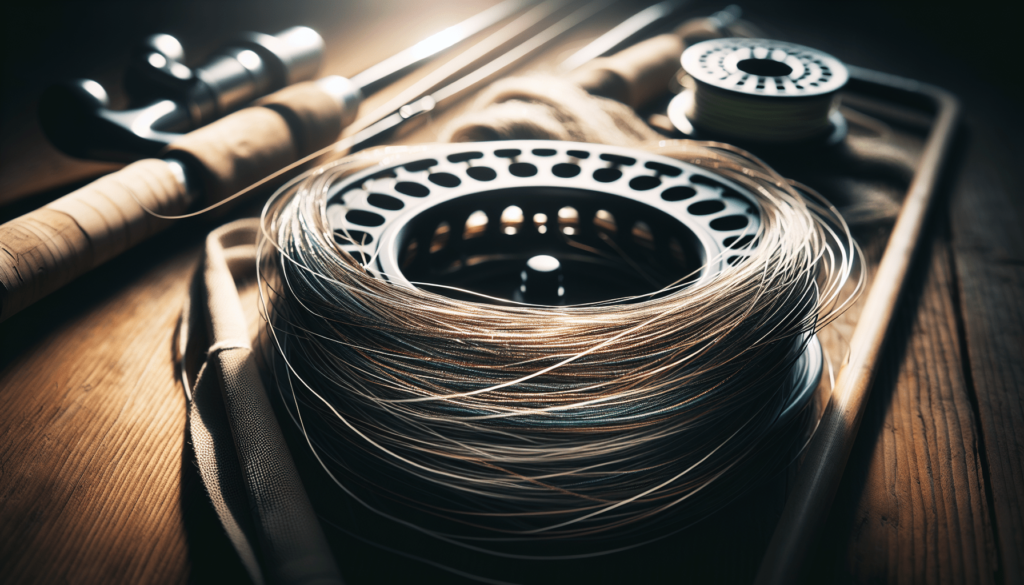
In order to keep your fly line in top condition and ensure a smooth casting experience, it’s important to clean it regularly. By using a simple mixture of mild soap and water, you can easily remove dirt, debris, and other contaminants that could otherwise damage your line. By following a few easy steps and taking the time to clean your fly line, you can extend its lifespan and enjoy more successful fishing outings.
How Do I Clean My Fly Line?
When it comes to fly fishing, ensuring that your fly line is clean is crucial for optimal performance. Dirty fly lines can affect the way your line floats, casts, and even how well you can detect strikes. Maintaining a clean fly line will not only prolong its lifespan but also improve your overall fishing experience. In this article, we will discuss the importance of cleaning your fly line and provide you with step-by-step instructions on how to properly clean it.
The Importance of Cleaning Your Fly Line
Before we dive into the cleaning process, let’s first understand why keeping your fly line clean is so essential.
A dirty fly line can become coated with debris, oils, and dirt, which can lead to reduced buoyancy and increased friction as the line travels through the guides. This can result in poor casting performance and decreased accuracy. Additionally, a dirty fly line can make it more difficult to detect strikes, as the line may not float as well or exhibit subtle movements. By regularly cleaning your fly line, you can maintain its slickness, buoyancy, and overall performance.

Signs Your Fly Line Needs Cleaning
Identifying when your fly line needs cleaning is crucial to maintain its performance. Here are a few signs that indicate it’s time to clean your fly line:
- Reduced casting distance: If you notice that your fly line is not casting as far as it used to, it may be due to built-up dirt and debris on the line’s surface.
- Decreased buoyancy: A fly line that struggles to float or sits lower in the water than usual may be in need of cleaning.
- Visible dirt or debris: Inspect your fly line visually for any visible signs of dirt, debris, or discoloration.
- Increased friction: If you feel increased resistance as you strip or retrieve your line, it may be a result of dirt and grime buildup.
If you notice any of these signs, it’s time to give your fly line a thorough cleaning to restore its performance.

Cleaning Supplies You’ll Need
Before you begin the cleaning process, gather the necessary supplies to ensure a thorough and effective cleaning. Here’s what you’ll need:
| Cleaning Supplies | Description |
|---|---|
| Mild dish soap | A gentle soap that won’t damage the fly line |
| Clean cloth or rag | To wipe down the fly line during cleaning |
| Fly line cleaning pad | Specifically designed to remove dirt and grime |
| Fly line dressing | To condition and protect the fly line after cleaning |
| Warm water | To help loosen debris and clean the fly line |
Ensuring that you have the right cleaning supplies will make the process easier and more effective.

Step-by-Step Guide to Cleaning Your Fly Line
Now that you have your cleaning supplies ready, let’s walk through the step-by-step process of cleaning your fly line:
Step 1: Prepare the Cleaning Solution
Start by filling a clean container or sink with warm water and adding a small amount of mild dish soap. The soap should be gentle enough not to damage the fly line but strong enough to remove dirt and grime.
Step 2: Remove the Fly Line from the Reel
Carefully remove the fly line from the reel and lay it out in a straight line on a clean surface. This will make it easier to clean the entire length of the line.
Step 3: Clean the Fly Line
Dip the fly line cleaning pad into the warm, soapy water and gently run it along the entire length of the fly line. Pay attention to areas where dirt and debris may be more concentrated, such as the connection points with the backing and leader. Use a clean cloth or rag to wipe down the line and remove any excess soap and residue.
Step 4: Rinse the Fly Line
Once you’ve cleaned the entire length of the fly line, rinse it thoroughly with fresh, clean water to remove any remaining soap and debris. Ensure that the fly line is completely free of soap before proceeding to the next step.
Step 5: Dry the Fly Line
After rinsing, carefully dry the fly line with a clean cloth or rag. Avoid exposing the line to direct sunlight or heat sources, as this can damage the fly line material. Allow the fly line to air dry completely before moving on to the next step.
Step 6: Apply Fly Line Dressing
Once the fly line is dry, apply a small amount of fly line dressing to condition and protect the line. Follow the manufacturer’s instructions for application and allow the dressing to fully absorb into the line before use.
Step 7: Reel the Line Back onto the Reel
After the fly line dressing has been applied and absorbed, carefully reel the line back onto the reel, taking care to avoid any twists or tangles. Your fly line is now clean, conditioned, and ready for your next fishing adventure!

Tips for Maintaining a Clean Fly Line
To ensure that your fly line stays clean and performs optimally, here are a few additional tips for maintenance:
- Regular cleaning: Make a habit of cleaning your fly line after every few fishing trips or whenever you notice signs of dirt and debris buildup.
- Avoid harsh chemicals: When cleaning your fly line, use gentle soap and avoid harsh chemicals that can damage the line material.
- Inspect the line: Regularly inspect your fly line for any visible signs of wear, cracks, or damage. Replace any damaged sections to prevent line failure during fishing.
- Store properly: When not in use, store your fly line properly to prevent tangling and exposure to sunlight, which can degrade the line material.
- Use line cleaner pads: Invest in fly line cleaning pads specifically designed to remove dirt, debris, and oils from the line surface.
By following these tips, you can maintain a clean and well-performing fly line for many fishing seasons to come.

Final Thoughts
Cleaning your fly line is an essential part of fly fishing maintenance that can significantly impact your fishing experience. By regularly cleaning and conditioning your fly line, you can ensure optimal performance, casting accuracy, and buoyancy on the water. Remember to inspect your fly line, maintain proper storage practices, and invest in quality cleaning supplies to keep your fly line in top condition. So next time you’re gearing up for a day on the water, take the time to clean your fly line—it’s a simple yet effective way to enhance your fly fishing experience.